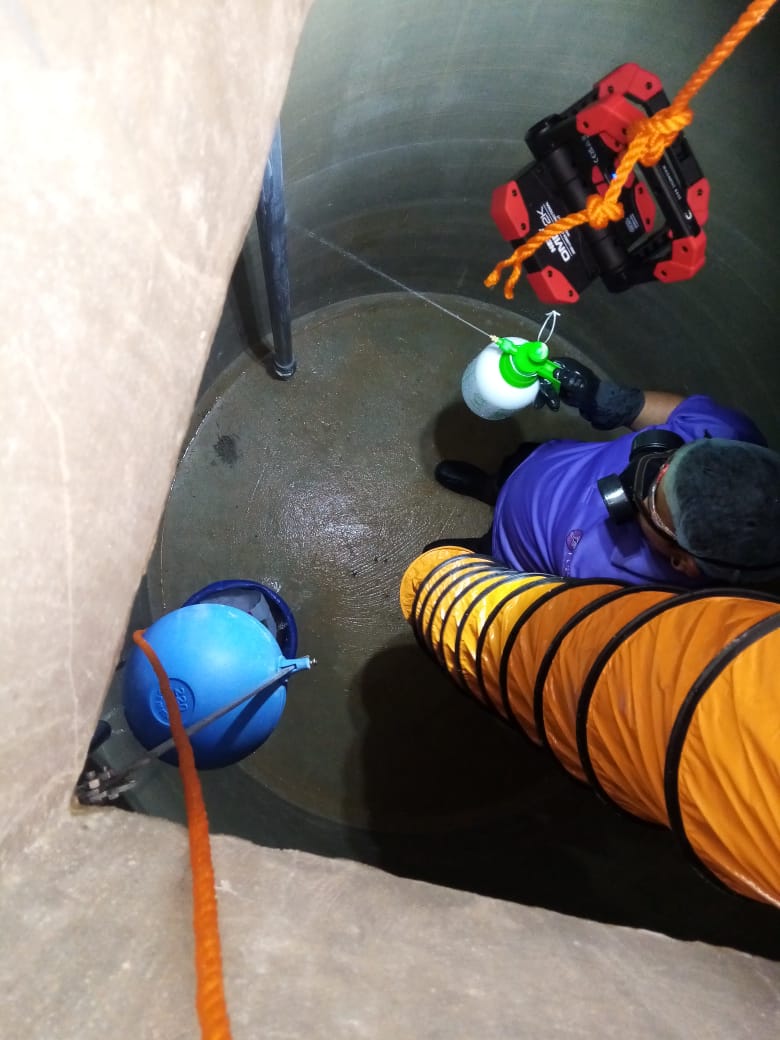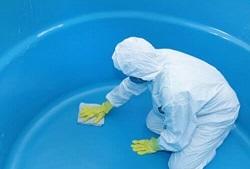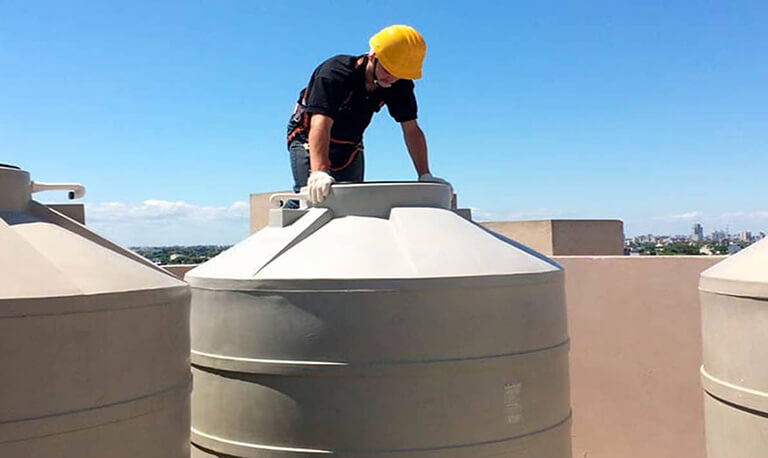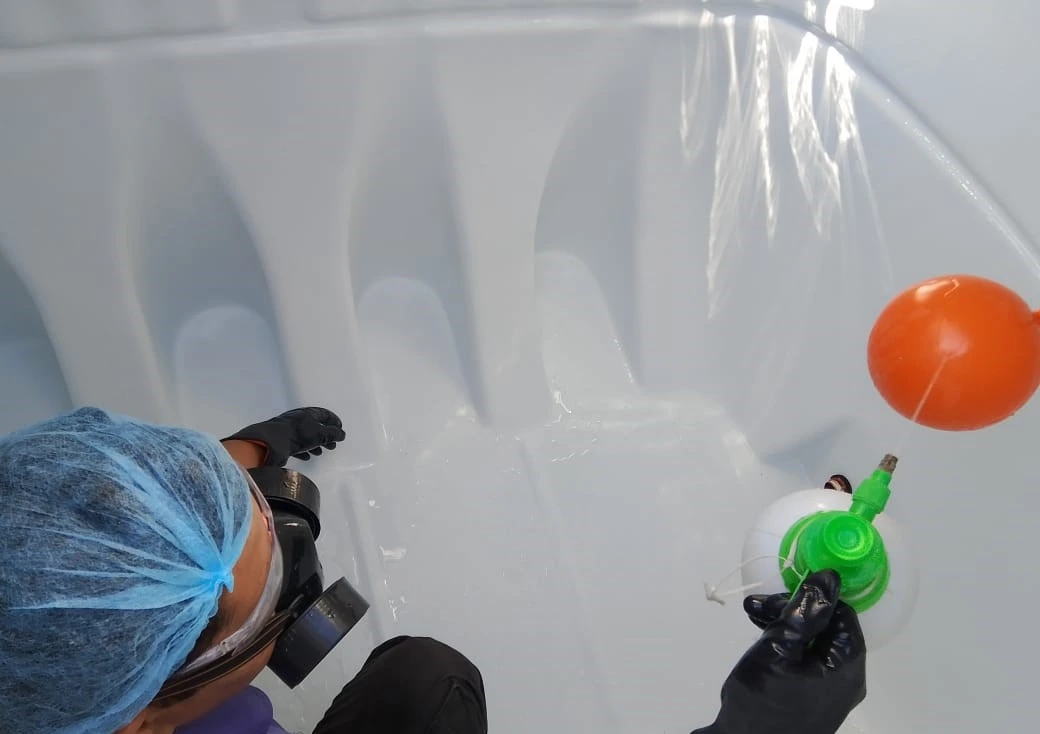How to Clean a Water Tank: Water Tank Cleaning Checklist
Cleaning your water tank is crucial for maintaining your health and safety. Neglected tanks can lead to contaminated water, resulting in various health issues. Regular cleaning prevents bacteria from entering your water supply and helps maintain the tank’s condition, providing you with peace of mind over time.
In this blog, we’ll cover everything you need to know about water tank cleaning, including the cleaning process itself.

When Should You Clean Your Water Tank?
It’s recommended to clean your water tank at least every six months. More frequent cleanings ensure better water quality and safety. Watch for signs indicating that your tank needs cleaning, such as:
Sediment Buildup and Algae Growth
Over time, sediment and debris can accumulate in your water tank, leading to several problems. This buildup can create a breeding ground for bacteria, compromising water quality, causing clogs, and reducing water flow. It can also decrease the tank’s storage capacity.
Additionally, algae growth can adversely affect water quality, resulting in further complications. If you notice algae on the tank’s walls or visible sediment and debris, it’s time to clean your water tank.
Discolored Water and Foul Odors
Discoloration of water is a clear indication that your water tank needs attention. If the water appears discolored, it may be due to rust, sediment, or other contaminants inside the tank.
Strange or unpleasant odors can also signal a problem, often caused by bacteria, algae, or other microorganisms within the tank. A noticeable change in color and an offensive smell indicate that it’s time for a thorough cleaning.
Sediment Buildup and Algae Growth
It’s recommended to clean your water tank at least every six months. More frequent cleanings ensure better water quality and safety. Watch for signs indicating that your tank needs cleaning, such as:
Health Issues: Illnesses and Water-Related Diseases
Contaminated water can lead to various health problems, including diarrhea, typhoid, vomiting, and stomach cramps. If you or your family members are experiencing these symptoms or suffering from waterborne diseases, it may be due to contaminated water, highlighting the urgent need for water tank cleaning.
How to Clean a Water Tank: Step-by-Step Instructions
Here’s a checklist of steps to follow when cleaning your water tank:
1. Drain the Water Tank
Before cleaning, it’s essential to drain the water tank completely. This ensures that all contaminants are removed. Emptying the tank allows you to clearly see any remaining impurities and helps eliminate accumulated debris and sediment.
To drain the tank, open the drain valve and let the water flow out. You can expedite the process by using a hose. Ensure that there are no electrical connections near the tank while draining. A completely empty tank makes thorough cleaning much easier and more effective.
2. Scrub the Interior Surfaces
Cleaning the interior surfaces of the water tank is crucial. Before you tackle the inside, consider cleaning the exterior first. Rinse the outside of the tank to prevent any dirt from entering during the internal cleaning process. Use water, a sponge or brush, and a standard household cleaner to remove external dirt.
Once the outside is clean, you can focus on the interior. Use liquid soap, mild detergent, bleach, or a baking soda solution mixed with water. Scrub the inside thoroughly to remove dirt, debris, or algae buildup.
Make sure to scrub the walls and bottom of the tank until all residues are removed. A long-handled brush can help you reach corners and other difficult areas effectively.
3. Rinse the Water Tank
Once you’ve scrubbed the interior surfaces of the water tank, it’s important to rinse it thoroughly. This step will eliminate any remaining dirt or debris. Continue rinsing until the tank is completely clean and free of any traces of detergent or cleaning chemicals. If necessary, repeat the rinsing process.
You can use a high-pressure hose or water jet to rinse the tank. If you lack this equipment, you can fill the tank with water and let it sit for a few hours, then drain it and dispose of the water safely.
4. Disinfect the Water Tank
To disinfect the water tank and its pipes, you can use liquid bleach or an antibacterial spray. Fill the tank with water mixed with the disinfectant and run the solution through the taps to sterilize the pipes. This process will help ensure they are free from bacteria and other contaminants. Allow the bleach solution to sit for several hours before emptying the tank.
5. Empty the Water Tank
Next, empty the water tank completely and carefully dispose of the disinfecting water. Rinse the tank again to remove any residual bleach or cleaning products. After rinsing, fill the tank with fresh water and let it sit for at least half an hour before flushing the entire system again.
Don’t forget to replace the lid to prevent dirt or debris from entering the clean water tank. Allow the tank to dry, and once it’s completely dry, it will be ready for use. You can then refill it with fresh water.
Why Professional Water Tank Cleaning Services Are Important
While cleaning your water tank on your own is possible, it’s often best to hire professionals for the job. There are numerous benefits to using professional water tank cleaning services. Experts can conduct risk assessments, identify potential issues, and utilize the latest cleaning and disinfection techniques.
Professionals have the knowledge, expertise, and equipment necessary for effective water tank cleaning. When in doubt, seeking professional help is always a wise choice.
Does your water tank need cleaning? Contact us today for our water tank cleaning services!





